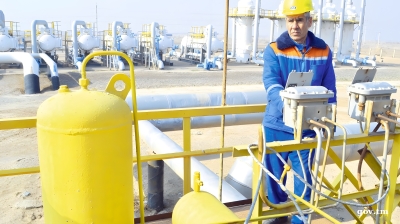Mongolia’s central bank raised its policy interest rate by 450 basis points (bps) to 15% on August 18 in a bid to stem a sharp fall in the country’s national currency.
The tugrik, which has been the world’s worst-performing currency in August, hit a record low of 2,272 to the US dollar on August 18, following 23 straight days of decline. The currency depreciated by over 8% against the greenback since the start of the month and is now worth half of what it was in the fall of 2008.
The decision to hike rates was taken to improve yields on tugrik-denominated assets in order to protect the currency and ensure mid-term stability, the bank said in a statement on its website. Following the central bank’s announcement, the tugrik gained a bit to trade at 2,256 per a dollar.
The Mongol currency, which has already been hit hard throughout 2015 and 2014 by the low commodity prices and economic setbacks in its major trading partners, has come under a renewed pressure after the newly-elected government announced earlier this month that the country is in a deep state of “economic crisis”. The currency's depreciation might accelerate further as start of the academic year approaches fast and the need for hard cash to buy school uniforms and supplies is rising.
The government is now drafting a plan to fight slowing growth and a soaring budget deficit. Some of the planned measures will include spending freeze, salary cuts for civil servants, debt reduction efforts and the set-up of a body tasked with attracting foreign investments.
It was indeed a boom in FDI that helped Mongolia racked up an astronomical GDP growth of 17.5% in 2011. But the freefall in commodity prices have badly hit the economy of the resource-rich country with growth projected at just under 1% in 2016. Mongolia is also arguably hurting more than any other country in the world as the huge Chinese economic engine looses steam. Mongolia’s southern neighbor buys up nearly all of its copper, gold and coal.
Latest figures by the statistics office showed GDP expand by 1.4% in the first half of the year, easing from 3% a year ago. The sharp slowdown in growth over the past few years was likely the biggest advantage for the Mongolian People’s Party (MMP), which trounced the Democratic Party in the parliamentary elections in late June.
It did not take long for the new government to roil the markets by saying it may not have money to pay salaries. The government debt burden is expected to reach 78% of GDP in 2016, above the target of 55%. The projected budget deficit is seen at $2.6bn, or 21% of the GDP. Additionally, Mongolia's central bank's foreign reserves are net -$429mn.
The country sold $1.5bn in sovereign debt since 2012, resulting in a negative outlook from Moody’s rating agency. Mongolia’s foreign debt has surged amid a fall in government revenues mainly because of the sharp decline in coal and copper prices, the country’s main exports. Many international experts expect the country to require a bailout but Mongolian politicians have so far refused to discuss the possibility, according to the Financial Times.
The government has promised to reveal more details of the “economic crisis” plan in the upcoming days. MPP, credited for luring investors into the country as it led Mongolia for most of its democratic quarter of a century, has pledged to introduce investor-friendly policies in the country’s ailing mining sector and cut debt.
A delegation from the International Monetary Fund (IMF) arrived in the capital of Ulaanbaatar on August 17 to "establish early contact" with the recently elected government, Bloomberg reported.
News

Ukraine’s elite HUR forces turn the tide in the battle for Pokrovsk, as Russia’s effort to capture key logistics hub fails
The battle for Pokrovsk became intense early on November 1and it looked like the fall of the key logistics hub to Russia was imminent. But a bold counterattack by Ukraine’s elite HUR forces seems to have turned the tide.

US prepares attack on Venezuela as Maduro begs Putin for aid
The Trump administration has reportedly drawn up a list of potential military targets within Venezuela as part of its intensifying pressure on President Nicolás Maduro, who has turned to Moscow seeking urgent military assistance.

Bulgaria suspends fuel exports to EU after US sanctions Lukoil
Bulgaria has temporarily suspended exports of petroleum products to European Union countries after the United States imposed sanctions on Russian oil giant Lukoil.

Tens of thousands rally in Serbia's Novi Sad one year after deadly station collapse
Tragedy that killed 16 people has become a symbol of public anger over corruption and negligence, fueling Serbia’s largest protest movement in more than a decade.




